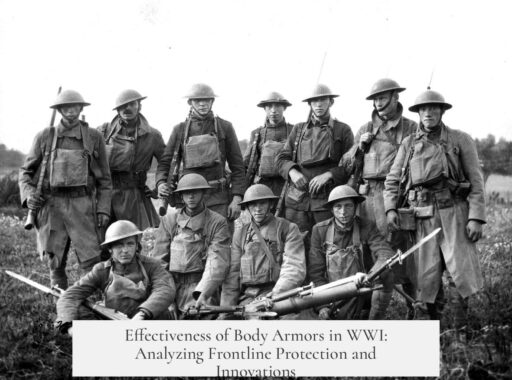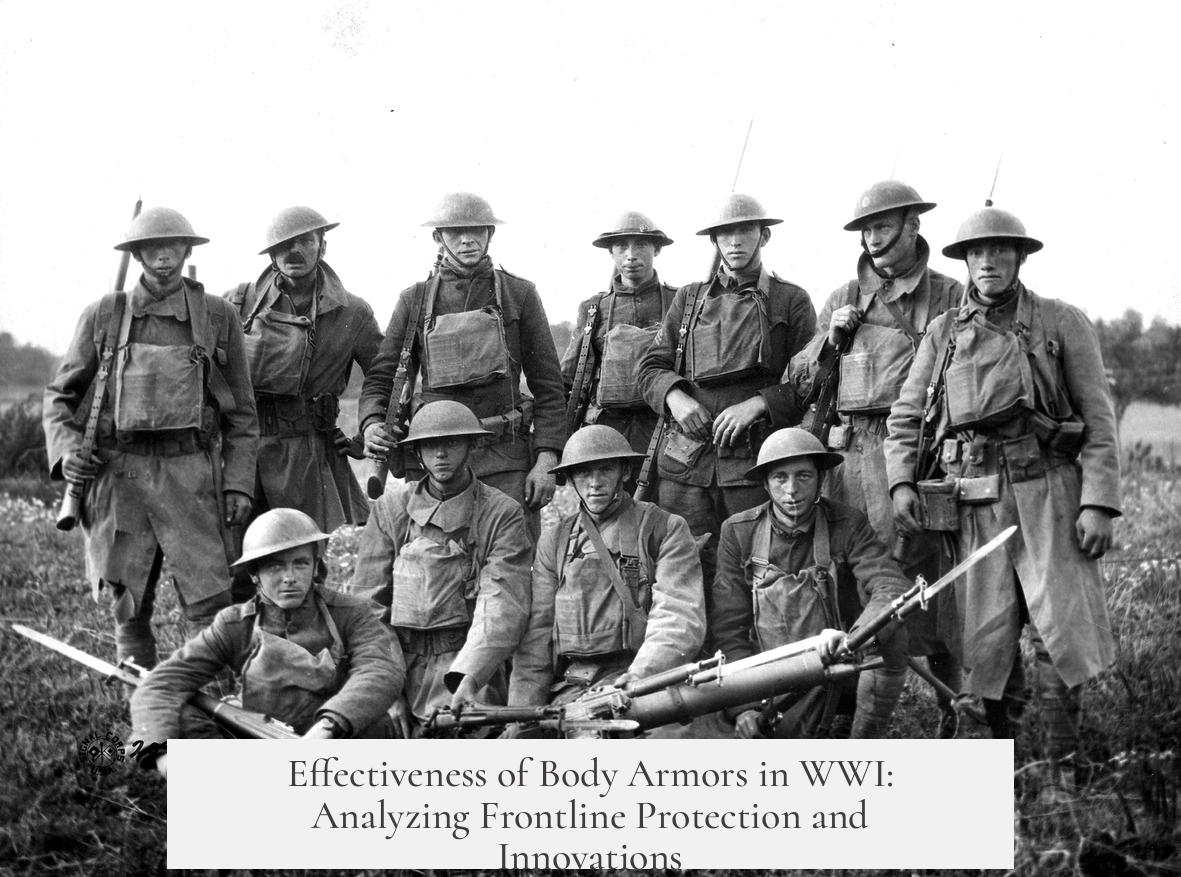Body armors in WWI were moderately effective mainly against shell fragments; they offered limited protection against direct bullets. The armor improved soldier survivability against shrapnel but often failed to stop high-velocity rifle rounds. Different countries developed various designs and materials but faced challenges in production, weight, and mobility.
French forces ordered about 100,000 chest plates and smaller numbers of leg and groin protectors. They also issued over 3.2 million epauliers Adrian—curved steel plates sewn onto coats. These plates helped reduce injuries from shrapnel but were less effective against bullets.
The British experimented with steel, silk, rubber, and kapok for armor, yet produced only small, non-standardized quantities. One issued item, a necklet armor, was designed for about 400 soldiers per division but deteriorated quickly in trenches due to harsh conditions. High cost and limited durability prevented widespread use.
Germany’s main contribution was the Sappenpanzer, with around 500,000 units produced. Weighing 9 to 11 kilograms, it stopped shell fragments and some long-range bullets effectively. Its heavy weight reduced mobility, so it was deployed primarily to sentries and machine gunners with static defensive roles, where movement constraints were less severe.
Most WWI armors were bullet resistant rather than bullet proof. This means they stopped fragments of explosions better than direct rifle bullets. The heavy weight and lack of standardization limited their use, especially for attacking troops who needed agility. Private firms also made armor during the war, but statistics and distribution remain unclear.
- Body armor mainly protected against shell fragments, not direct bullets.
- French armor was mass-produced but focused on shrapnel protection.
- British armors used mixed materials but saw limited deployment.
- German Sappenpanzer was effective but heavy, deployed mostly to static troops.
- Weight and mobility limited broader effectiveness and use.
How Effective Were Body Armors in WWI? A Closer Look at the Frontline Protection
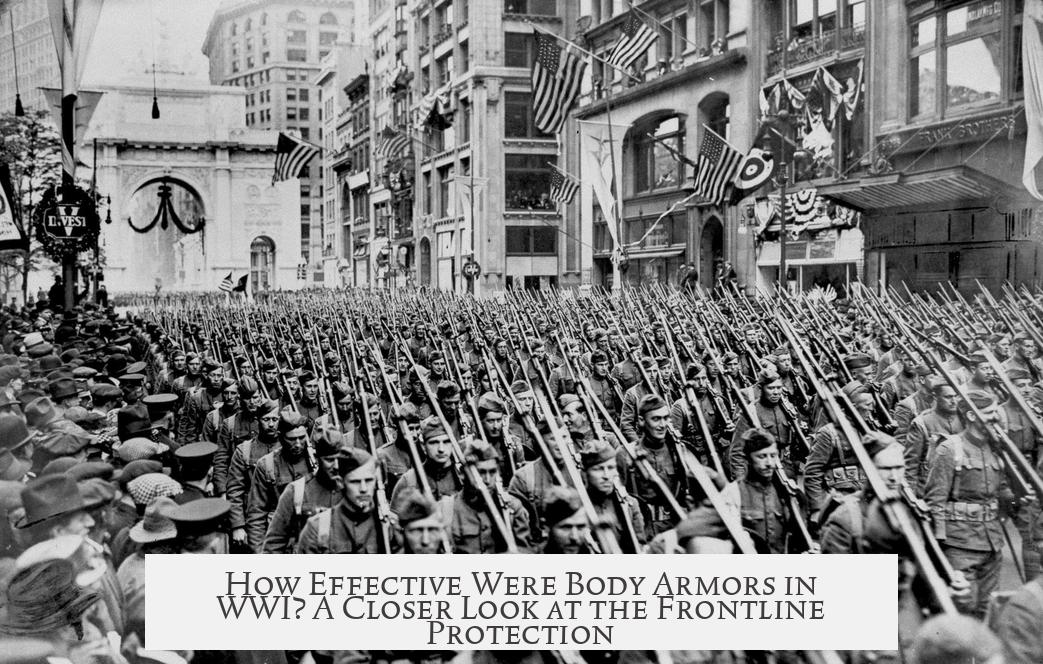
Body armors in WWI were mainly effective at stopping shell fragments rather than direct bullets. This might seem like a letdown if you imagined knights charging waves of bullets in shiny steel, but the reality was far more nuanced. The brutal trenches of World War I turned out to be a testing ground for various armored vests and plates, with differing success depending on material, design, and deployment.
So, how well did these early forms of body armor actually protect soldiers, and what lessons do they offer today? Buckle up (preferably with body armor) and let’s dive in.
Bulletproof or Bullet Resistant? That’s the Question
First, a critical distinction: WWI armor was mostly bullet resistant, not bulletproof. Bulletproof means you can stop a bullet dead in its tracks every time. Bullet resistant means you might reduce the damage from certain projectiles, mostly shell fragments, and increase your survival odds.
Soldiers faced more danger from shrapnel—bomb and shell fragments flying around—than from direct bullet hits in many situations. Thus, the armor was better designed to block sharp, twisting pieces of metal than high-velocity bullets. This basic fact shaped everything about its effectiveness.
French Armor: Epauliers Adrian and the Chest Plates
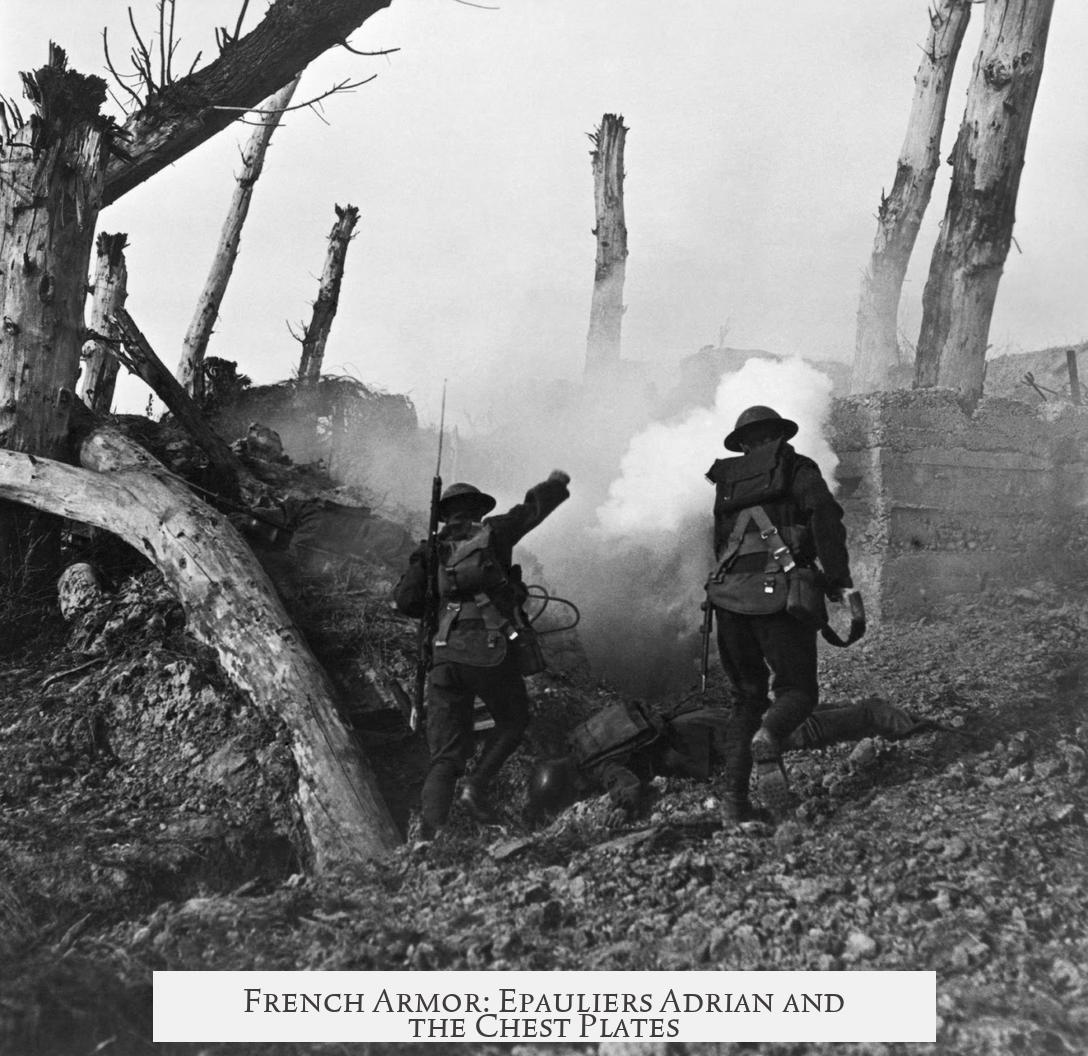
The French made a massive push in body armor production, ordering an impressive 100,000 chest armor units. That’s enough to outfit whole divisions, at least theoretically.
They didn’t stop at the chest. The French also created limited leg and groin armor, showing some thoughtful coverage, though these were rare. Their signature solution came in the form of epauliers Adrian: curved steel plates sewn directly onto great coats.
More than 3.2 million epauliers Adrian plates rolled out by early 1916, turning soldiers’ coats into partial armor.
This was a clever retrofit approach—armor that didn’t require new gear but improved survivability against fragments. Critics might say it was bulky and encumbering, but it offered measurable protection in cold, muddy trenches.
British Innovations: Silk, Steel, and Some Disappointments
The British experimented widely with various materials, including steel plates, silk, rubber, and kapok—a plant fiber used for padding. No single material stood out as the “winner.”
Stop me if you’ve heard this before: Britain tried to standardize armor but never really nailed it. Production numbers were low.
Take the necklet armor issued—intended as head and neck protection—issued at slightly better than 400 units per division. It sounds promising until you learn it fell apart under harsh trench conditions and cost a fortune.
So, the British made valiant efforts but hit barriers in durability and economics.
Germany’s Sappenpanzer: The Heavy but Reliable Contender
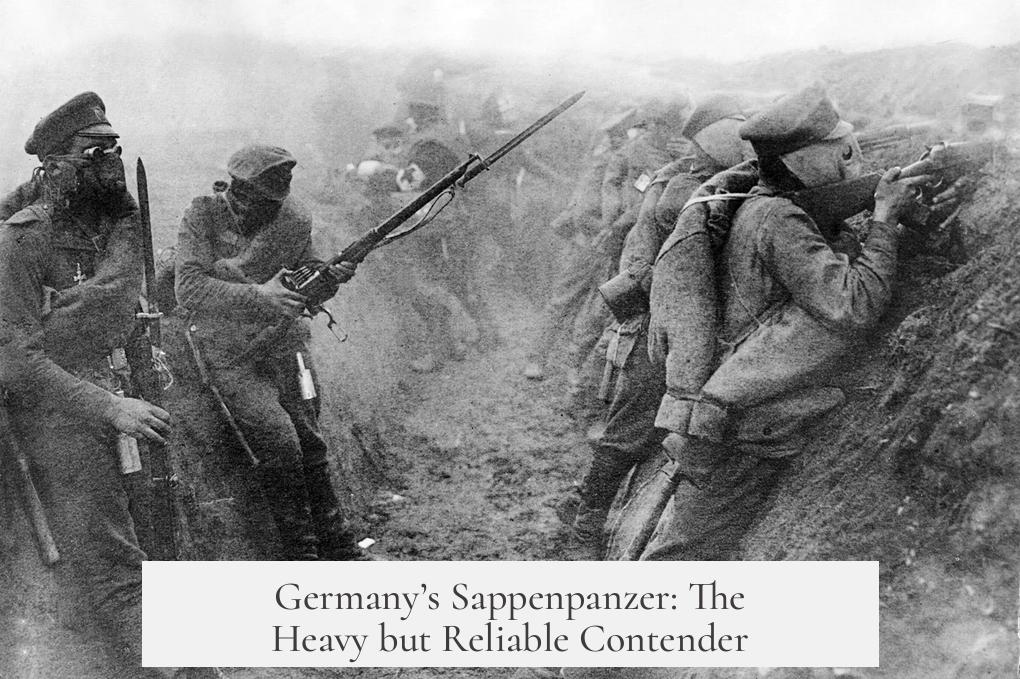
Now, the Germans went all in with their Sappenpanzer, arguably the most advanced WWI armor. Imagine a set of three silicon-nickel steel plates hanging off your shoulders, designed to cover vital areas.
| Feature | Details |
|---|---|
| Weight | 9 to 11 kilograms (that’s roughly 20 to 24 pounds) |
| Production | Approximately 500,000 units created during the war |
| Protection | Effective against shell fragments and even long-range bullets |
| Deployment | Given mainly to sentries and machine gunners |
At first glance, the weight might sound like a deal-breaker. Adding over 20 pounds on top of rifle, ammo, and trench gear? That’s a recipe for slow and sweaty advances. But the Germans used their armor where it counted: on sentries and machine gunners whose roles were more static. Less running, more standing guard.
This strategic use helped maximize protection benefits without crippling troop mobility—a clever balancing act.
The Big Picture: What Can We Learn from WWI Body Armor?
WWI body armor was a mixed bag. It didn’t turn soldiers into invincible warriors but it did improve chances against fragmented wounds. The French and British dabbled in innovation but struggled to balance protection, comfort, and cost.
Germany focused on a heavy but effective solution, deploying armor where mobility was less critical. This pragmatic approach contributed to their tactical strategy in the trenches.
Are body armors from a century ago completely obsolete today? Not entirely. They laid the groundwork for modern ballistic protection. Their clear lesson: protection is a trade-off. You can’t simply slap steel on a soldier and expect perfection. Weight, mobility, and the threat type matter greatly.
Practical Takeaways for Readers Interested in Military History and Armor
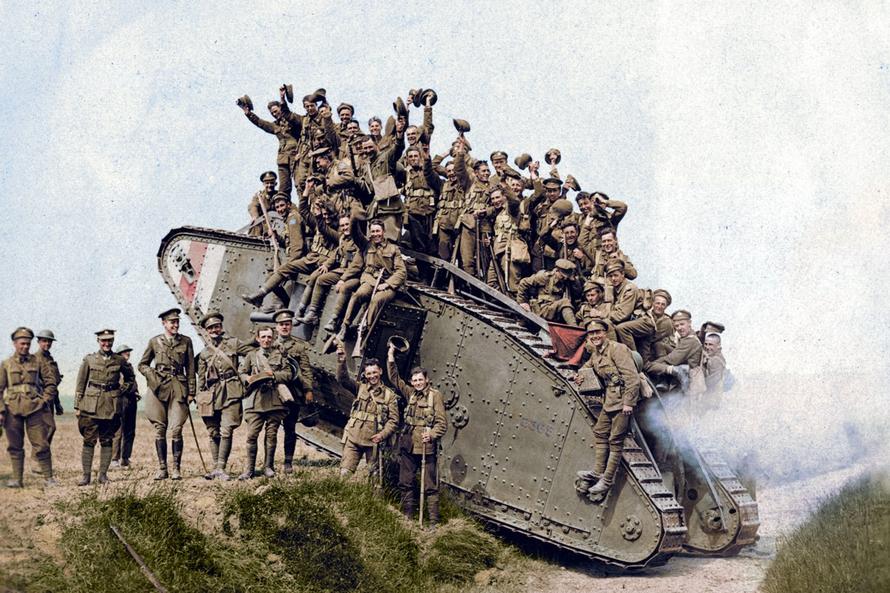
- Fragmentation is deadly. Modern armor still focuses on shrapnel from explosives, a fact proven repeatedly in WWI trenches.
- Material choice matters. The British learned quickly that combining steel with resilient fibers could offer comfort and protection.
- Deployment matters more than design. The Germans showed you can build better armor, but knowing when and whom to equip is key.
It’s funny to imagine WWI soldiers struggling under heavy steel plates, but their bravery in testing new gear saved lives. Today’s lightweight, flexible armor owes a debt to those gritty innovations.
Final Thoughts: Could WWI Soldiers Have Used Better Armor?
Absolutely—but the technology and logistics of the time held them back. Mass production, supply chains, and material science were less evolved. Plus, commanders had to weigh the downside of slowing soldiers in fast-moving attacks.
In essence, WWI body armor worked best as a fragment shield and psychological comfort, rather than a bullet stopper. If you were a machine gunner behind the lines, the heavy German Sappenpanzer was your best friend. If you were charging the trenches, the extra weight might be a liability.
So, next time you see a WWI photo, notice those steel plates, fabric patches, and partial armor pieces. They are reminders of the slow but steady march toward protecting the soldiers who faced hell on earth — one splintered shell at a time.
